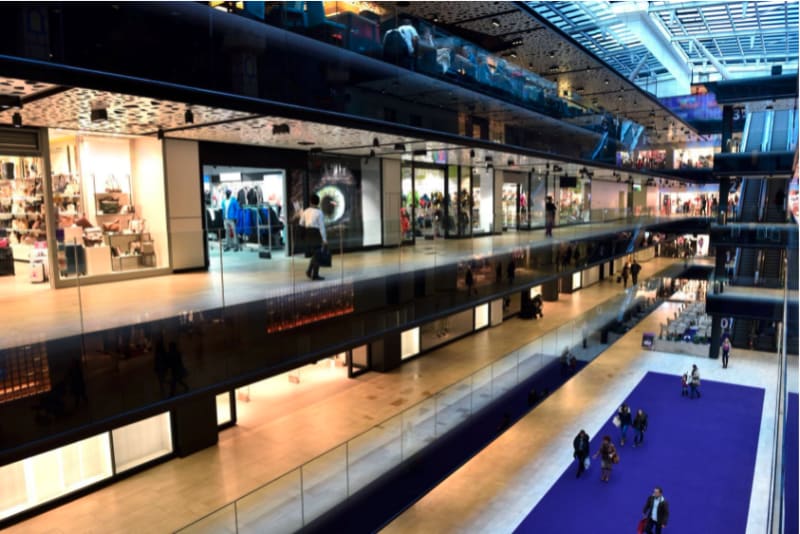To Let
Search
Latest News
Back to news results

Technology is pushing retail boundaries
There is no doubt that traditional brick-and-mortar shopping remains the backbone of the South African retail industry, but new ways of purchasing are fast becoming standard practice in retail markets around the world, says Malcolm Horne, CEO of Broll Property Group. He was speaking on the occasion of the company’s release of its latest retail research paper entitled From E- to M- to A-Commerce: The Impact of Technology on the Retail Industry.
While E-commerce is well-entrenched in the market globally and the use of mobile devices (M-commerce) to conduct retail purchases is increasing steadily, A-commerce - also known as augmented commerce - is hovering in the wings, according to Broll’s research paper. Augmented commerce relates to retail that utilises augmented reality, enabling consumers to visualise products virtually in the real-world environment before purchasing.
In general, South African consumers have yet to become more fully acquainted with these new retail practices, but local retailers need to keep up to speed if they don’t wish to be caught “sleeping on the retail watch”.
New trends and products are emerging daily, making the retail environment volatile and exciting. “Technology has been the driving force behind these radical advancements,” says Horne. In addition, there is enormous pressure on major retailers to acquire brands which meet their consumers’ expectations and demands, while integrating new technologies into their day-to-day operations.
Are these relentless technological innovations driving brick-and-mortar retail towards an eventual retail apocalypse? It’s hard to say. Transforming a traditional retail business digitally and technologically can be an overwhelming task, but may be a necessary one for many retailers as end-users demand improved, instant and simpler shopping transaction experiences. In some cases, retailers have taken the leap of converting their “bricks into clicks” by closing under-performing stores and creating e-commerce fulfilment centres to beef up their online income stream.
The South African online shopping marketplace is still very much in its infancy but an increasing number of retailers are incorporating the convenience concept of “click-and- collect” into their businesses. Larger national retailers such as Dis-Chem, Clicks, Pick n Pay, Mr Price Group and Cotton On amongst others, now offer this convenient shopping service to assist time-strapped consumers.
Broll’s research paper paints a vivid picture of the scope of technologies which could become part of the retail landscape in the near future and which are already being used in some marketplaces.
Alibaba’s supermarket, Hema, for example, has revolutionised mobile app shopping. Within nine minutes of receiving an order via the Hema app, staff hand-select the specific goods and send a personalised shopping bag to the delivery warehouse where it is packaged for delivery and delivered within 30 minutes in a 3km radius. Furthermore, their app allows shoppers to purchase their goods via facial recognition technology.
Amazon Go, a partially-automated, cashless and till-free store in Seattle allows patrons to shop in the store using the Amazon Go mobile app. Now the same concept is geared to shake up grocery retail in Chicago and San Francisco.
The research also highlights “endless aisle shopping” as fast becoming the latest retail buzz-phrase. As retailers look at downsizing their brick-and-mortar portfolios, the concept of providing in-store kiosks where customers can order products that are out of stock or not sold in-store is growing. Once ordered, products are dispatched from off-site warehouses to customers’ homes. “Showroom” or “bag-free” stores take this a step further. A range of product items is showroomed in-store but not kept in stock. Instead they are ordered online and delivered directly to customers.
If retailers are opting for more warehouse capacity, improved efficiency and speed is vital and this is where robots step to the fore. Various models of autonomous robots are already in operation, such as LocusBots that work alongside warehouse staff and assist in locating and transporting products, while Sure Sort excels at a small-item sorting system.
7Fresh supermarket in China already offers autonomous shopping carts. These types of carts guide shoppers to the exact aisle and location of the products needed, display advertising and accept payment. The carts even follow customers to their cars with their purchases and are programmed to return to the store completely unmanned.
And if that’s not mind-blowing enough, here come autonomous self-driving stores.
Toyota’s e-Palette, Moby Mart and Robomart are some of the autonomous self-driving convenience stores that could potentially roam the streets 24/7 once they have been fully developed. Essentially, consumers will use a specific app to request a visit from an autonomous self-driving store. Once the store arrives, the app can open its doors, consumers can select the products they want and are charged automatically upon exiting the store.
It seems clear from Broll’s research that the practice of retail is destined to be increasingly dominated by technology. “Adapting and keeping abreast of this uncertain landscape is a challenge that retailers will need to embrace,” concludes Horne.